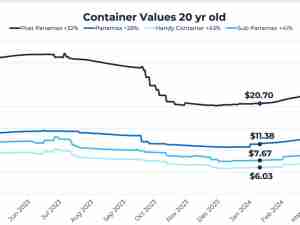The X-Press Pearl’s sad fate is the latest in a disappointing recent and persistent catalogue of container ship fires of varying degrees of severity, which occur on an almost weekly basis. The vast majority of these are initiated by a cargo of a hazardous nature. One estimate puts the number of mis- or undeclared dangerous cargoes in excess of 150,000 containers a year – each of which has disastrous potential. While still to be fully investigated, the catalyst for the inferno on the X-Press Pearl has been asserted to be a leakage of nitric acid, which was correctly declared but apparently incorrectly packaged or packed.
TT Club has been campaigning for some time to reduce these life-threatening, cargo and ship damaging, environmentally impactful and highly costly events. This activity includes promoting awareness and wider use of the IMO/ILO/UNECE Code of Practice for Packing of Cargo Transport Units – the CTU Code - and seeking changes in regulatory requirements to improve the clarity, application, implementation and enforcement of mandatory regulations, including the International Maritime Dangerous Goods (IMDG) Code.
Peregrine Storrs-Fox is TT Club’s Risk Management Director, “Effective review of regulations is to be applauded. Indeed, the latest meeting of the IMO’s Maritime Safety Committee debated in detail the issue of container ship fires. However, such consideration will not result in speedy change,” he comments. “Holistic industry led initiatives are necessary. An understanding by all the actors in the supply chain of safe packaging, packing, loading and unloading of containers, and of the need for detailed, accurate information of the cargo’s attributes and any potentially hazardous reactions to any eventuality occurring through the entire transit, is necessary. Above all truth, trust and transparency must guide all involved.”
TT Club organised a series of three webinars earlier this year covering all aspects of container ship fires, which looked at the whole gamut of the issue from ensuring that cargo packing, declaration and stowage are right; how the ship and its crew are able to respond to incidents when they arise, specifically in terms of firefighting capability; and to the aspects of forensic investigation and legal work leading through to the probable litigation after the event.
Fundamental framework guidance for cargo packing is found in the CTU Code, which TT is striving to have better understood and utilised, embarking with fellow members of the established Cargo Integrity Group in producing the ‘CTU Code - Quick Guide’ and ‘Container Packing Checklist’ to enable easier reference to the Code. Already translated and available in four of the official six UN languages, the remaining translations of the Quick Guide will be published soon. It is currently available for download in English, Arabic, Chinese (Mandarin and Traditional) and Spanish.
Storrs Fox understands the extent of the task. “It is a significant challenge to have all those responsible for the safe dispatch of general cargo to follow the CTU Code, particularly when often done on behalf of other parties and disconnected from transport risks” he comments. “However, dangerous goods are subject to mandatory regulation. In the case of this casualty, we see another element to the problem. The offending cargo was apparently correctly declared, with its relevant properties known, and presumably originating from an experienced shipper. Yet for whatever reason the packaging was inappropriate or the packing and/or securing within the container was insufficient, resulting in a dangerous leakage. While supply chains are complex and the hazards numerous, relevant knowledge and guidance are critical, within a control environment that must include effective inspection and enforcement regimes.”








